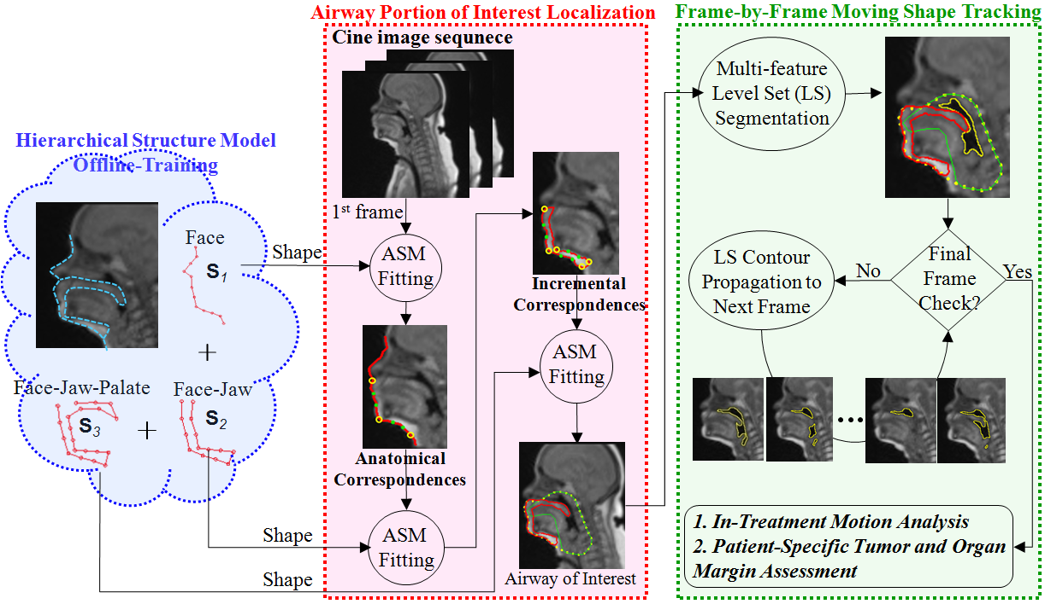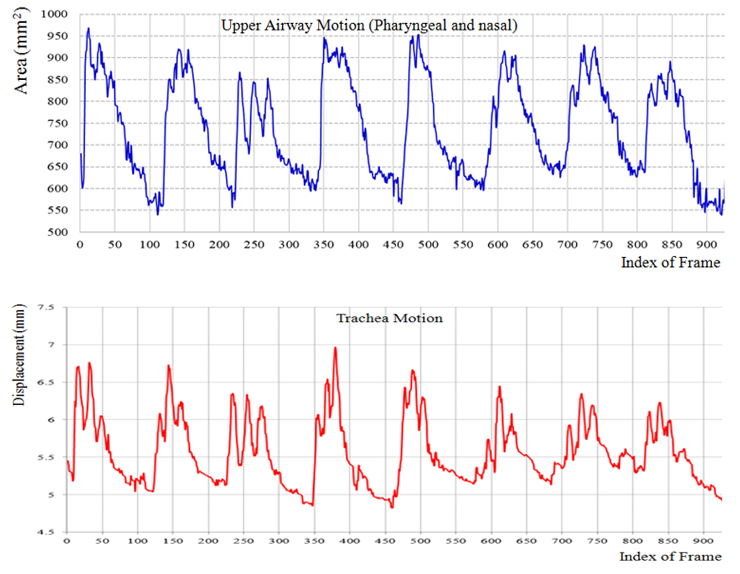MRI-guided radiation therapy systems can acquire cine images to dynamically monitor in-treatment internal organ motion. The complex head and neck (H&N) structures and low-contrast/resolution of on-board cine MRI images make automatic motion tracking a very challenging task. In this study, we proposed an integrated model-driven method to automatically track the in-treatment motion of the H&N upper airway, a complex and highly deformable region wherein internal motion often occurs in an either voluntary or involuntary manner, from cine MRI images for the analysis of H&N motion patterns.
Methodology:
We firstly built a set of linked statistical shapes (including face, face-jaw, and face-jaw-palate) using principal component analysis from clinically approved contours delineated on a set of training data. The linked statistical shapes integrate explicit landmarks and implicit shape representation. Then, a hierarchical model-fitting algorithm was developed to align the linked shapes on the first image frame of a to-be-tracked cine sequence and to localize the upper airway region. Finally, a multi-feature level set contour propagation scheme was performed to identify the upper airway shape change, frame-by-frame, on the entire image sequence. The multi-feature fitting energy, including the information of intensity variations, edge saliency, curve geometry, and temporal shape continuity, was minimized to capture the details of moving airway boundaries.

Results:


Related Publications:
Hua Li*, Hsin-Chen Chen, Steven Dolly, Harold Li, Benjamin Fischer-Valuck, James Victoria, James Dempsey, Su Ruan, Mark A. Anastasio, Rojano Kashani, Olga Green, Vivian Rodriguez, Hiram Gay, Wade Thorstad, Sasa Mutic, “An Integrated-Model Driven Method for In-treatment Upper Airway Motion Tracking using Cine MRI in Head & Neck Radiation Therapy“, Medical Physics, 2016, Vol.43, No. 8, pp: 4700-4710.